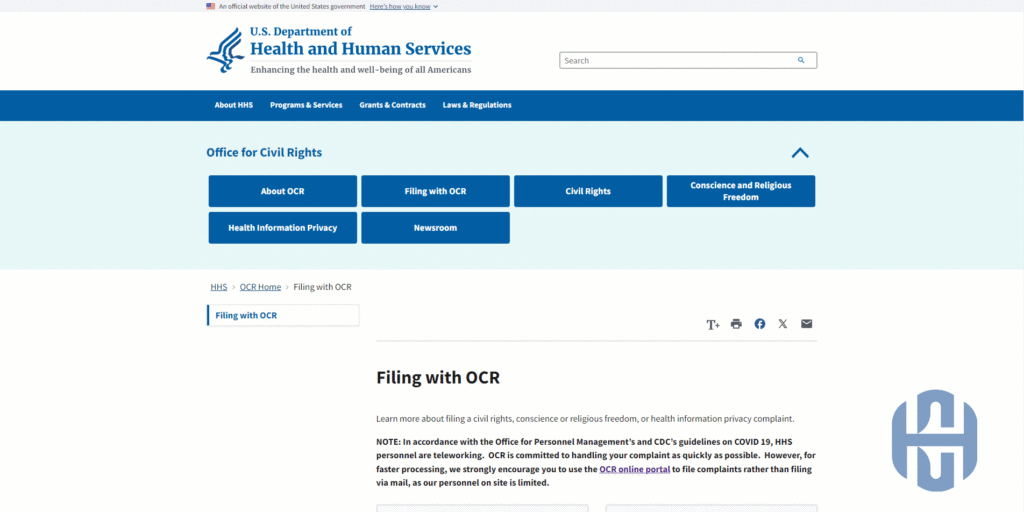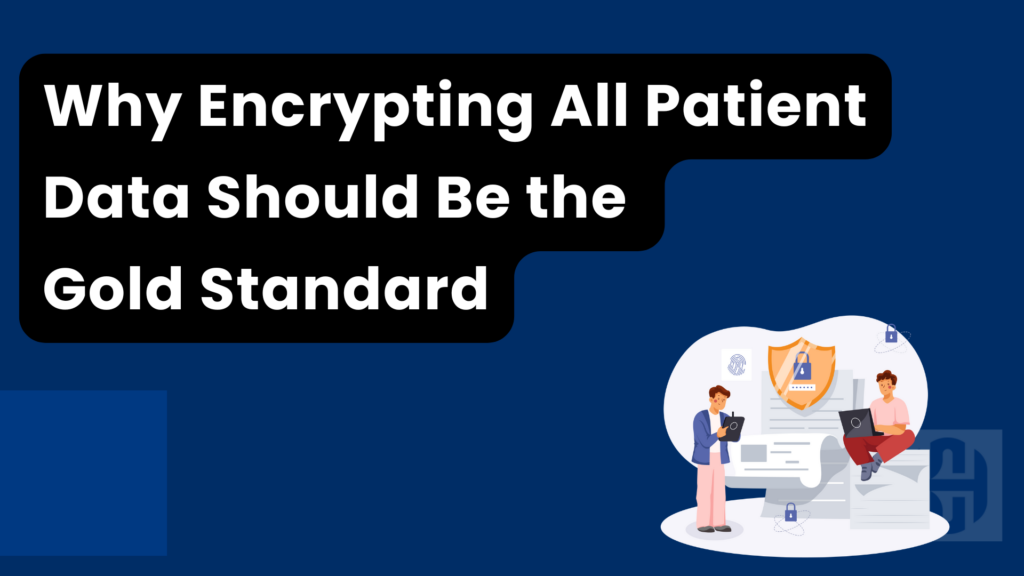Introduction
A HIPAA violation occurs when there is a breach in the safeguards set forth by the Health Insurance Portability and Accountability Act (HIPAA) to protect patient information. Reporting these violations is crucial for maintaining the privacy and security of protected health information (PHI). This article will guide you through the steps of identifying, reporting, and understanding the implications of a HIPAA violation. Using tools like HIPAA Certify can simplify and streamline this process, ensuring that all necessary actions are taken promptly and effectively.
What is a HIPAA Violation?
A HIPAA violation involves the failure to comply with any of the standards and provisions outlined in HIPAA, particularly those related to the privacy and security of PHI. Violations can occur in various forms, including unauthorized access to patient information, data breaches, and failure to implement adequate safeguards.
Common Examples of HIPAA Violations
- Unauthorized Access: Accessing patient records without a legitimate reason.
- Data Breaches: Exposure of patient information due to hacking or lack of security measures.
- Improper Disposal: Inadequate destruction of PHI-containing materials.
- Lack of Training: Failure to provide adequate HIPAA training to employees.
- Ignoring Patient Rights: Not allowing patients to access or amend their health records.
For more details on what constitutes a HIPAA violation, refer to the U.S. Department of Health and Human Services (HHS) website.
Steps to Identify a HIPAA Violation
Identifying a HIPAA violation requires vigilance and understanding of HIPAA regulations. Here are steps to help you recognize potential violations:
Step 1: Understand HIPAA Regulations
Familiarize yourself with the key aspects of HIPAA, including the Privacy Rule, Security Rule, and Breach Notification Rule. Understanding these regulations will help you identify actions that constitute a violation. Detailed information can be found on the HHS website.
Step 2: Monitor Access to PHI
Regularly monitor who is accessing PHI and for what purpose. Unauthorized access or misuse of PHI can indicate a violation. You can learn more about PHI monitoring on the Centers for Medicare & Medicaid Services (CMS) website.
Step 3: Conduct Regular Audits
Perform regular audits of your organization’s data handling practices. This helps in identifying any non-compliance issues early on. Guidance on conducting HIPAA audits is available from the National Institute of Standards and Technology (NIST).
Step 4: Provide Employee Training
Ensure all employees are trained on HIPAA regulations and the importance of PHI security. Well-informed staff are more likely to identify and report violations. HIPAA Certify can provide you with HIPAA training.
How to Report a HIPAA Violation
Reporting a HIPAA violation involves several critical steps. It’s important to act promptly to mitigate any potential harm and comply with legal requirements.
Step 1: Document the Violation
Before reporting, document all relevant details about the violation. This includes:
- Date and Time: When the violation occurred.
- Nature of the Violation: Detailed description of what happened.
- Affected Parties: Information about individuals whose PHI was compromised.
- Evidence: Any supporting documents or evidence of the violation.
Step 2: Notify Your Organization’s HIPAA Compliance Officer
Most healthcare organizations have a designated HIPAA Compliance Officer. Report the violation to this individual, who will guide you through the next steps. Provide all documented details and evidence to assist in the investigation.
Step 3: Use HIPAA Certify for Reporting
HIPAA Certify is a valuable tool for reporting violations. It simplifies the process, ensuring that all necessary information is included and that the report is submitted correctly. HIPAA Certify can also track the progress of your report and provide updates on the resolution.
Step 4: File a Complaint with the Office for Civil Rights (OCR)
If the violation is significant or not addressed by your organization, you may need to file a complaint with the OCR. Follow these steps:
- Online Submission: Visit the OCR’s Complaint Portal and complete the online form.
- Mail or Fax: Download and print the complaint form from the OCR website, then mail or fax it to the OCR.
- Provide Required Information: Include your name, contact information, details of the violation, and any supporting evidence.

Understanding the Consequences of a HIPAA Violation
Reporting a HIPAA violation is crucial, but understanding the consequences of such violations is equally important. Consequences can be severe and include:
Fines and Penalties
HIPAA violations can result in significant fines and penalties. These vary based on the severity and nature of the violation:
- Tier 1: Unknowing violations – $100 to $50,000 per violation.
- Tier 2: Reasonable cause – $1,000 to $50,000 per violation.
- Tier 3: Willful neglect (corrected) – $10,000 to $50,000 per violation.
- Tier 4: Willful neglect (uncorrected) – $50,000 per violation.
Detailed information on fines and penalties can be found on the HHS website.
Legal Action
In some cases, HIPAA violations can lead to legal action. This can include lawsuits from affected patients or enforcement actions by the OCR.
Damage to Reputation
A HIPAA violation can severely damage an organization’s reputation. Trust is crucial in the healthcare industry, and a violation can undermine the trust of patients and partners.
Corrective Action Plans
Organizations found in violation of HIPAA may be required to implement corrective action plans. These plans ensure that the organization takes steps to prevent future violations. More details on corrective action plans can be found on the HHS website.
Preventing HIPAA Violations
Preventing HIPAA violations is better than dealing with the consequences. Here are steps organizations can take to minimize the risk of violations:
Implement Strong Security Measures
Ensure that robust security measures are in place to protect PHI. This includes encryption, access controls, and regular security assessments. For guidelines on implementing security measures, refer to the NIST SP 800-66.
Regular Training and Awareness
Provide regular HIPAA training for all employees. This helps ensure that everyone understands their responsibilities and the importance of protecting PHI. Training resources are available from the HHS website.
Develop and Enforce Policies
Create comprehensive policies and procedures for handling PHI. Ensure these policies are enforced and regularly reviewed. Templates and examples of policies can be found on the HHS website.
Use Technology Solutions
Utilize technology solutions like HIPAA Certify to help manage compliance. These tools can simplify monitoring, reporting, and managing HIPAA compliance.
The Role of HIPAA Certify in Reporting Violations
HIPAA Certify is a comprehensive solution designed to assist healthcare organizations in managing HIPAA compliance. Here’s how HIPAA Certify can help you report violations:
Streamlined Reporting Process
HIPAA Certify provides a streamlined reporting process, ensuring that all necessary information is captured and submitted correctly. This reduces the risk of incomplete reports and speeds up the resolution process.
Tracking and Updates
With HIPAA Certify, you can track the progress of your report and receive updates on its status. This helps you stay informed and ensures that the violation is being addressed.
Documentation and Evidence
HIPAA Certify allows you to attach documentation and evidence to your report. This ensures that all relevant information is included and can be reviewed by the appropriate authorities.
Compliance Management
In addition to reporting, HIPAA Certify offers tools for managing overall compliance. This includes risk assessments, policy management, and training programs.
Case Studies: Real-Life HIPAA Violations
Understanding real-life examples of HIPAA violations can provide valuable insights into how to prevent and report such incidents. Here are a few case studies:
Case Study 1: Unauthorized Access
An employee at a healthcare facility accessed the medical records of a celebrity patient without authorization. This was a clear violation of HIPAA’s Privacy Rule. The facility discovered the breach during a routine audit and reported it using HIPAA Certify. The employee was terminated, and the facility implemented additional training and access controls to prevent future violations.
Case Study 2: Data Breach
A hospital experienced a data breach when a hacker gained access to its network and stole PHI. The breach affected thousands of patients. The hospital used HIPAA Certify to report the breach to the OCR and affected individuals. The hospital also worked with cybersecurity experts to improve its security measures and prevent future breaches.
Case Study 3: Improper Disposal
A clinic disposed of old patient records by throwing them in a dumpster without shredding them. This was reported to the OCR by a concerned citizen. The OCR investigated and imposed fines on the clinic. The clinic then used HIPAA Certify to develop and implement a proper disposal policy, including training for staff on secure disposal methods.
Frequently Asked Questions
HIPAA requires that breaches affecting fewer than 500 individuals be reported within 60 days of discovery. Breaches affecting 500 or more individuals must be reported within 60 days to the OCR and media outlets. For more information, visit the HHS website.
Yes, employees can report HIPAA violations. It’s important for organizations to have a clear reporting process in place and ensure employees are aware of how to report violations. Additional guidance can be found on the HHS website.
If you’re unsure whether an incident is a HIPAA violation, it’s best to report it to your organization’s HIPAA Compliance Officer or use HIPAA Certify. They can investigate the incident and determine if it constitutes a violation.
After reporting a HIPAA violation, the OCR will investigate the incident. This may involve reviewing documentation, conducting interviews, and assessing the organization’s compliance with HIPAA regulations. Based on their findings, the OCR may impose fines, require corrective actions, or take other enforcement actions. More details on the investigation process can be found on the HHS website.
Conclusion
Reporting a HIPAA violation is a critical step in maintaining the integrity and security of PHI. By following the steps outlined in this guide, you can ensure that violations are reported promptly and effectively. Utilizing tools like HIPAA Certify can simplify the reporting process, providing a streamlined approach to compliance management. Remember, protecting patient information is not only a legal obligation but also a fundamental aspect of providing quality healthcare.





